Last updated on April 19, 2024
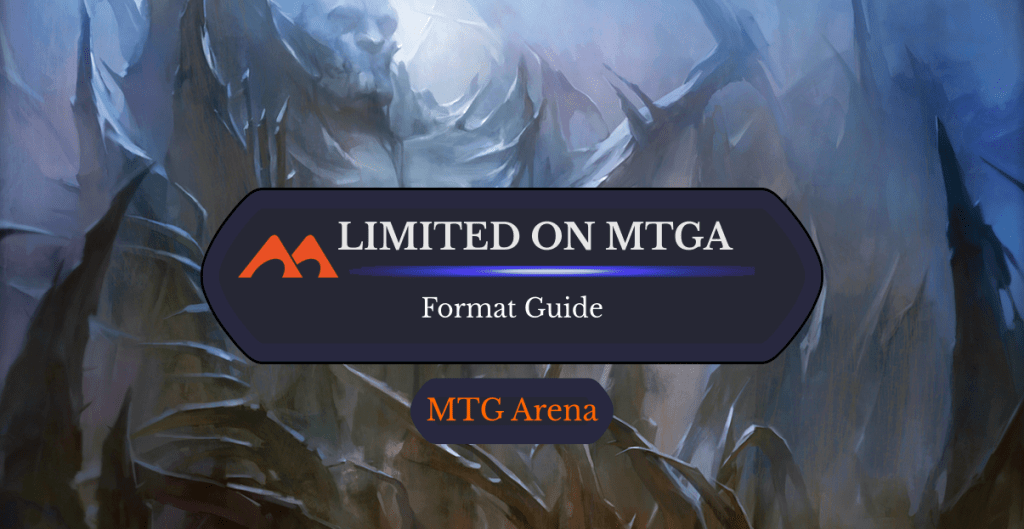
Shrine of Limitless Power | Illustration by Min Yum
MTG Arena offers multiple play options tailored to different users' preferences. Some like to play Constructed events while others, like me, love to play Limited events.
I fire multiple Drafts a day on both my PC and my iPhone from the comfort of my bed. But what if I told you Draft isn’t the only way you can play Limited on the app, and that there are multiple other events you can enter?
Have I caught your attention? Let's dive into the Limited MTG Arena events and how to make the most of them.
What’s Limited on MTG Arena?

Updraft Elemental | Illustration by Raf Sarmento
Limited is a format where players build their decks from a limited card pool. That's where the name comes from. This card pool is usually available in two forms: Sealed and Draft.
In a draft, you open three draft booster packs per player. First, you pick a card from the pack you opened and then pass it clockwise, picking a card from the pack passed to you and then passing again, until the “pool” is empty. You then open the next booster and repeat the process counterclockwise. Finally, you repeat the same method for the third pack passing clockwise again. When every card is picked you then build your deck with the cards you picked. Drafts on Arena are based on a set or a collection of sets.
But in Sealed you’re given six booster packs and use their contents as your pool to build your deck.
All Limited decks need to have a minimum of 40 cards in their main deck, and all of the other “unused” cards act as your sideboard.
What’s the Difference Between Limited and Constructed on MTGA?
The difference between Limited and Constructed on Arena relies on two things: card pool and deck size.
Constructed decks can be built based on their format's sets. For example, Standard is a format where you can choose at least 60 cards from the pool of sets currently in Standard you own to build a deck. Those cards need to be from the latest sets printed, and you can play up to four copies of each card aside from basic lands.
Since the card pool in Limited formats is significantly lower than the Constructed decks, Limited tends to have a lower power level than its Constructed counterparts. But you can play any number of the same cards from your pool, assuming you picked them.
What Limited Play Modes Are Available on MTGA?
On MTGA you can play matches either in a best-of-one or best-of-three format. Almost every BO1 is ranked, while BO3 formats are not. I’ll go over what this means in a second but for now, you just have to know that you should go for BO1 if you prefer “slightly quicker” matches. If you’re truer to your origins and want to play regular Magic, you may be inclined towards BO3 instead.
BO1 matches have something called the “hand smoother” implemented in them. Although its full extent isn’t public, it's supposed to almost always guarantee you have at least a couple of lands in your initial hand. This is huge as in some sets, like Ikoria where cycling was a solid archetype, let you play as low as 12 lands and keep mulligan at a minimum.
What’s Your Limited Rank?
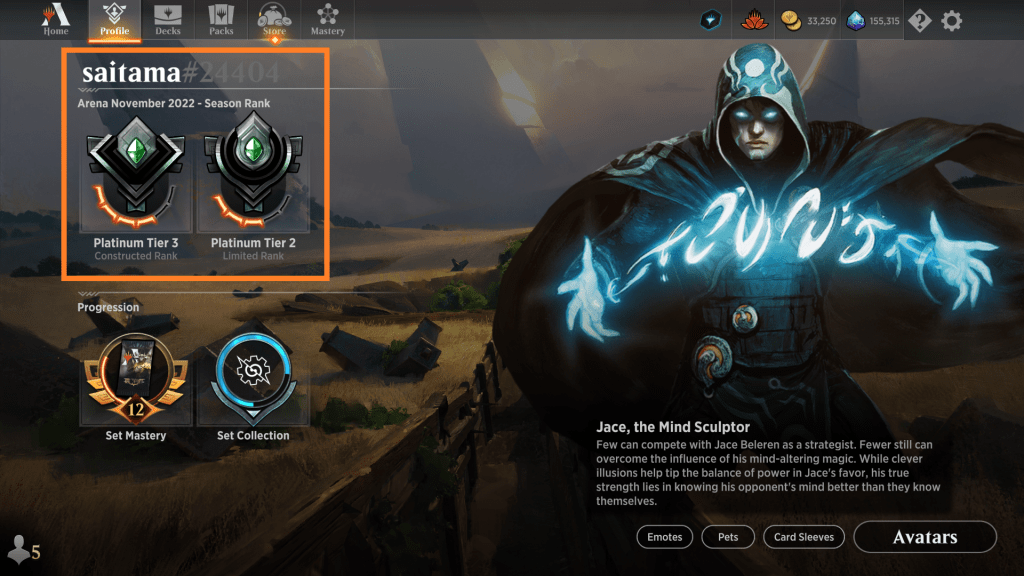
“Ranked” in MTGA refers to different ranks and tiers through a season that regularly lasts a month where you scale up with every win. You start at Bronze and the cap is Mythic, where you start getting a number ranking based on your monthly wins. Past #1,200 rank you get to play in the next MIQ which qualifies you for the set Championship. If you’re below #1,200 your rank gets reflected in percentage.
The higher your rank the more difficult it is to get wins, so you may want to just stay under a specific rank and wait until the season ends depending on your win percentage. But getting top Mythic not only gives you the chance to participate in these MIQs but also rewards you with free gems, so it's worth taking that into account.
How Do You Increase Your Limited Rank?
As you may have guessed, you increase your ranking by winning games. There are two “ladders” for you to climb: one Constructed and one Limited, but today I’m only going to focus on the latter. You start at the bottom of the Bronze rank, with five other ranks you need to complete until you hit Mythic. These are Bronze, Silver, Gold, Platinum, and Diamond.
From Bronze to Gold, each win counts as two tiers forward while one loss counts as one tier backward. From Platinum to Diamond, each win counts as one tier ahead and one loss counts as one backward. Once you reach a new rank you can't get knocked down from it.
This is a roughly summarized version of how the ladder system works. In each rank, there are subdivisions where you can climb from tier 4 to tier 1. Everything is already covered in our latest MTGA rank article if you want more details about how these ranks work.
Limited Formats on MTG Arena
Premier Draft
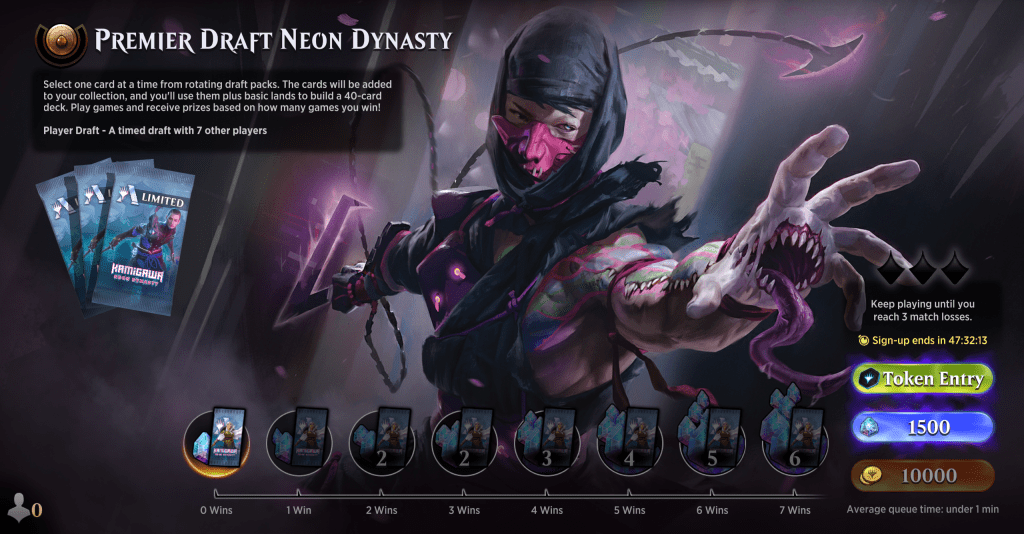
- Entry Fee: 1,500 gems or 10,000 gold
- Match Structure: BO1
- Max Rewards: 2,200 gems and 6 boosters
- Max Wins / Losses: 7 / 3
Premier Draft is a ranked format where you play in a series of BO1 games until you earn seven wins or three losses.
Traditional Draft
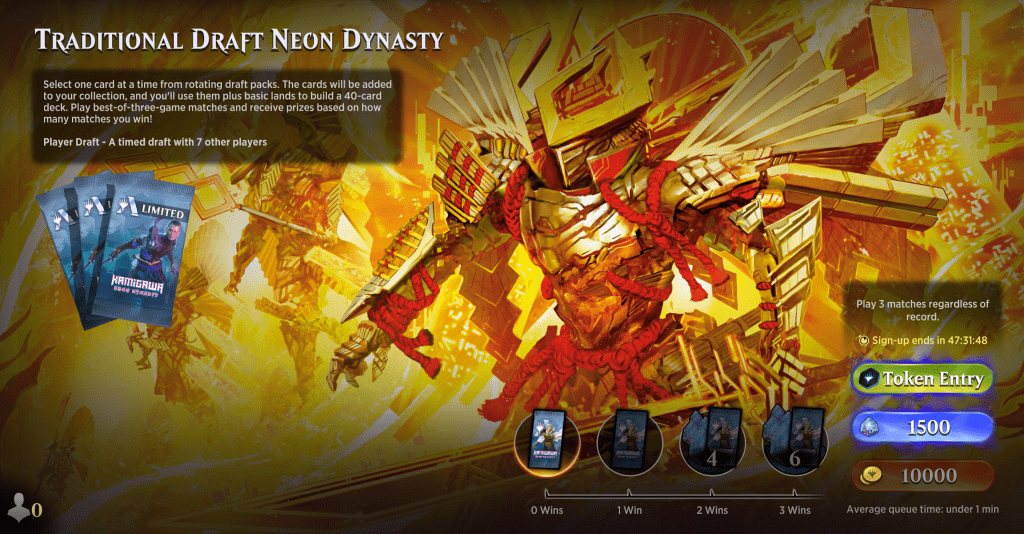
- Entry Fee: 1,500 gems or 10,000 gold
- Match Structure: BO3
- Max Rewards: 2,500 gems, 6 packs, and 2 Play-In points
- Max Wins / Losses: 3 matches regardless of wins/losses
If you’re used to playing BO3 matches Traditional Draft is the closest MTGA can offer. You play three games regardless of the result and get rewarded based on the number of wins you get.
You get a sizeable gem reward in addition to 6 packs for going all the way, which is a nice return on investment. The 2 Play-In points, which are critical if you're looking to get to a Qualifier Play-In event, are the real rewards though.
This is a bit more punishing than Premier Drafts for some players because one bad pairing can cost you your chance to profit. That said, you may end up with softer competition since there's no ladder system on these events, so you end up getting paired with players regardless of skill level.
Quick Draft
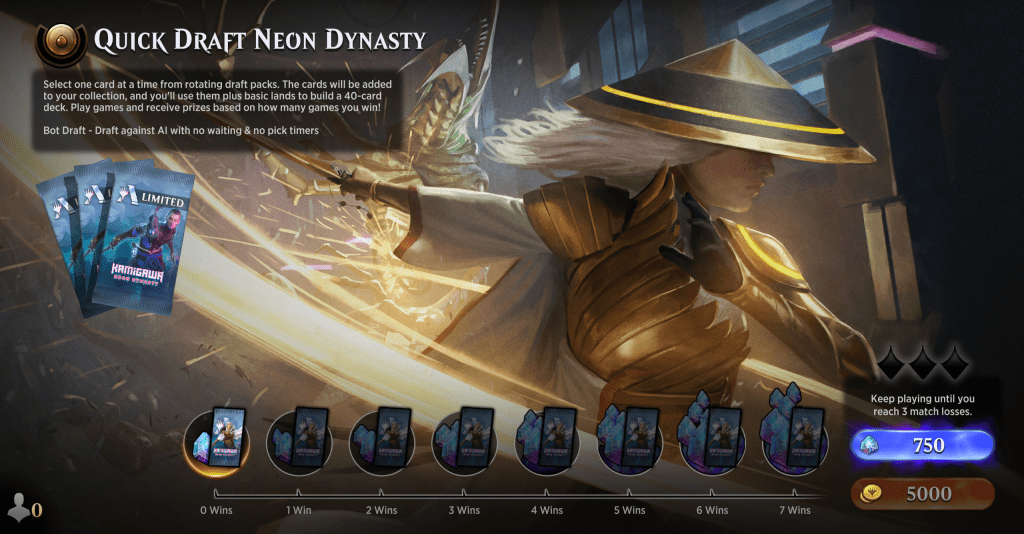
- Entry Fee: 750 Gems or 5,000 gold
- Match Structure: BO1
- Max Rewards: 950 gems and 2 set boosters
- Max Wins / Losses: 7 / 3
Quick Drafts are events where you draft in a pod with no wait time between picks as the other seven players are bots. This has its pros and cons, and there's some discussion to which extent you can force some archetypes and trick them into getting your lane open. But overall the main takeaway from these is that you can pause between your picks and even resume the Draft portion later.
This game mode is ideal if you want to invest a little and get a taste of what the format feels like. It’s probably the format I’d avoid in terms of getting profit since it's very hard to get six or more wins every time.
Sealed
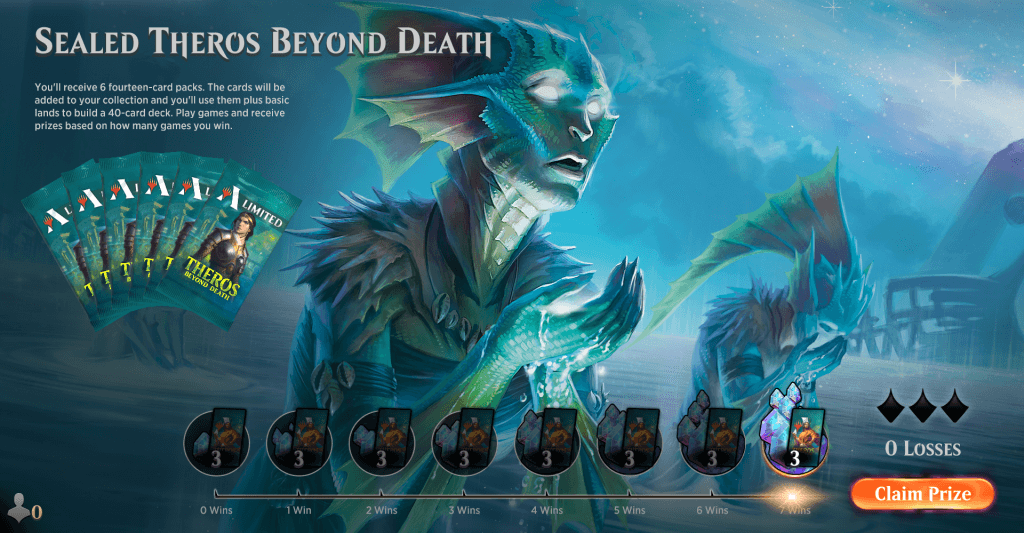
- Entry Fee: 2,000 Gems
- Match Structure: BO1
- Max Rewards: 2,200 gems and 3 set boosters
- Max Wins / Losses: 7 / 3
Sealed is limited time only and usually fire up at the beginning of the set towards the first half of its lifespan.
You open six boosters at once and build your deck around the card pool. This is a great way to get started in a new format.
Traditional Sealed

- Entry Fee: 2,000 Gems
- Match Structure: BO3
- Max Rewards: 2,200 gems and 5 set boosters
- Max Wins / Losses: 4 / 2
Traditional Sealed was first introduced to Arena with Kaldheim. The payout for this doesn't improve a lot. It's a bit worse since you only profit from going undefeated, and a single loss means you’re down on gems.
Of course, you get more boosters, but the issue is that you can’t convert those into gems to play again.
Arena Cube
Best of One
- Entry Fee: 4,000 gold
- Match Structure: BO1
- Max Rewards: 6,000 gold and 1 uncommon and 2 rares
- Max Wins / Losses: 7 / 3
Best of Three
- Entry Fee: 4,000 gold
- Match Structure: BO3
- Max Rewards: 6,000 gold and 2 uncommons and 1 rare
- Max Wins / Losses: 7 / 3
Arena Cube comes around MTGA once in a blue moon and is the equivalent of the Vintage Cube from MTGO, meaning you get to draft the best cards that Arena has ever seen. This includes all rebalanced cards and the ones introduced with Alchemy.
Tinkerer's Cube
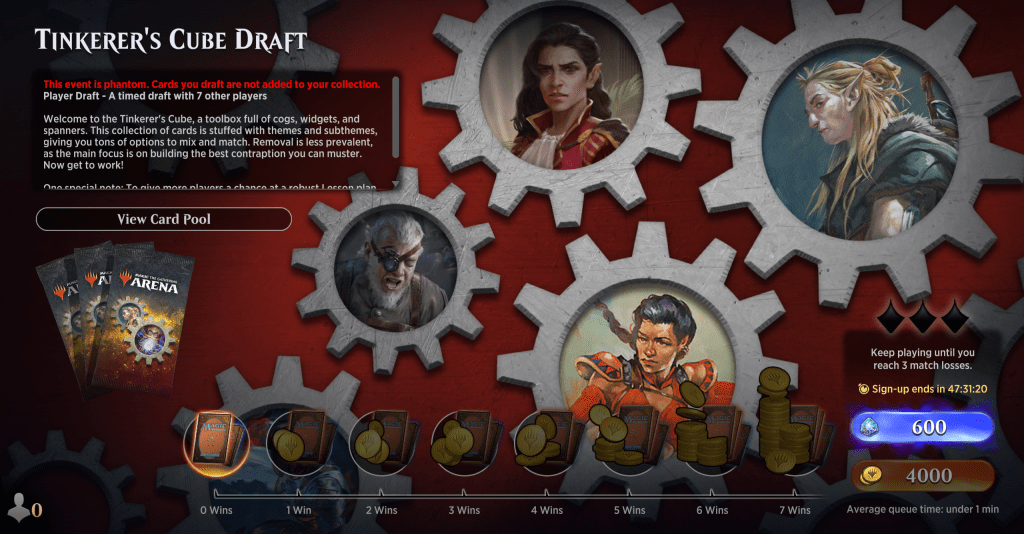
Best of One
- Entry Fee: 4,000 gold or 600 gems
- Match Structure: BO1
- Max Rewards: 6,000 gold and 1 uncommon and 2 rares
- Max Wins / Losses: 7 / 3
Best of Three
- Entry Fee: 4,000 gold or 600 gems
- Match Structure: BO3
- Max Rewards: 6,000 gold and 2 uncommons and 1 rare
- Max Wins / Losses: 3 matches regardless of wins/losses
Tinkerer’s Cube is very similar to the previous format but with a lower power level. The idea here is that the card pool is designed to build decks in a more puzzle-like style, meaning that they usually rely more on synergy and not raw power level.
Remix Draft
Best of One
- Entry Fee: 1,500 gems or 10,000 gold
- Match Structure: BO1
- Max Rewards: 2,200 gems and 6 boosters
- Max Wins / Losses: 7 / 3
Best of Three
- Entry Fee: 1,500 gems or 10,000 gold
- Match Structure: BO3
- Max Rewards: 2,500 gems, 6 packs, and 2 Play-In Points
- Max Wins / Losses: 3 matches regardless of wins/losses
The cost and prize structure of Remix Draft might be familiar, but the format is unique. Take what you know about Cube, give it a theme and keep the cards. Yes, the cards you select are added to your collection from this WotC-curated draft. The cards are pulled from what is legal in Historic, and be on the lookout for the archetypes designed into the set, navigating them with a given theme like artifacts is exciting.
Draft Challenge
- Entry Fee: 15,000 gold or 3,000 gems
- Match Structure: BO3
- Max Rewards: 4 Player Draft tokens and 20 packs
- Max Wins / Losses: 2 match losses
Draft Challenges are usually run every set towards the end of it, and it's a great way to get your hands on Draft tokens. You usually want to spend gold to enter these events since it’s way cheaper than using gems and doesn’t require more than three wins to get your entry back. The only downside is that these end at two losses so you have a narrower margin of error.
Momir
In Momir, you get a deck full of lands. Weird, right? Yes, but there's a catch. You get an emblem where once per turn you can discard a land from your hand and pay X to put any random creature with the mana value equal to X into play.
It’s a fun format but without a doubt one that's very much luck-dependent. Being on the draw is huge as you’ll always have access to one more mana and one more card.
Omniscience
In Omniscience you start from a pool that's the same as your opponents but with only three cards in hand. Every card you cast costs zero mana, and cards that have the “draw” mechanic are huge since they provide you with more cards to play on the same turn.
Turbo Draft
Turbo Draft is drafted as if you were drafting any regular set in Quick Draft, except each spell you cast costs five colorless mana less. Cards like artifacts that add any mana act as pseudo copies of Mox Ruby (or any of the old Moxen, really) and big creatures can now get played on turn 1.
Which Limited Mode Is the Best to Play?
If you’re looking to build a collection, the BO3 events are better for you since you’ll end up with more cards and boosters even if you don't get the entire profit. But if your main goal is to qualify for significant Arena events then BO1 should be your priority. It all depends on your goals but I usually prefer a mix of both Traditional Draft and Premier Draft.
At the beginning of a format, I like playing BO3 since the competition is softer there most of the time and most players are still getting used to the set so an experienced player can take advantage of that. On the other hand, I play BO1 Premier Drafts if I’m ranking low for the past few weeks since the season started. Playing Gold at the beginning of each season isn’t the same as playing it later. The ladder gets reset at the beginning of each season and players get downshifted, so it's very likely there are some Diamond players in Gold in the first couple of weeks or some Mythic players in the Platinum rank.
Now if your goal is to hit Mythic, that kind of doesn't matter to a certain extent. It's easier to reach Mythic in the last week of the season since most grinders and players have already moved to Mythic. But this requires you to spend considerable time grinding at the end of the season.
As I said, I prefer a mix of both of the above options and space my time between playing Premier BO1 and Traditional BO3 Drafts. Sealed events and Quick Drafts aren’t optimal for building a collection or grinding for gems but are still good options if you want a change of pace. It really depends on your win rate at the end of the day.
Use Draftsim to Practice Limited
So, why should you use Draftsim and Arena Tutor? Let's look at both individually.
Draftsim
You can choose between Sealed and Draft to practice with new sets and learn the cards using Draftsim’s draft simulator.

You can even start drafting before the set is released. We set up sets in our draft simulator as soon as it’s entirely revealed, that way you can share your pools and thoughts with other players to prepare for upcoming tournaments.
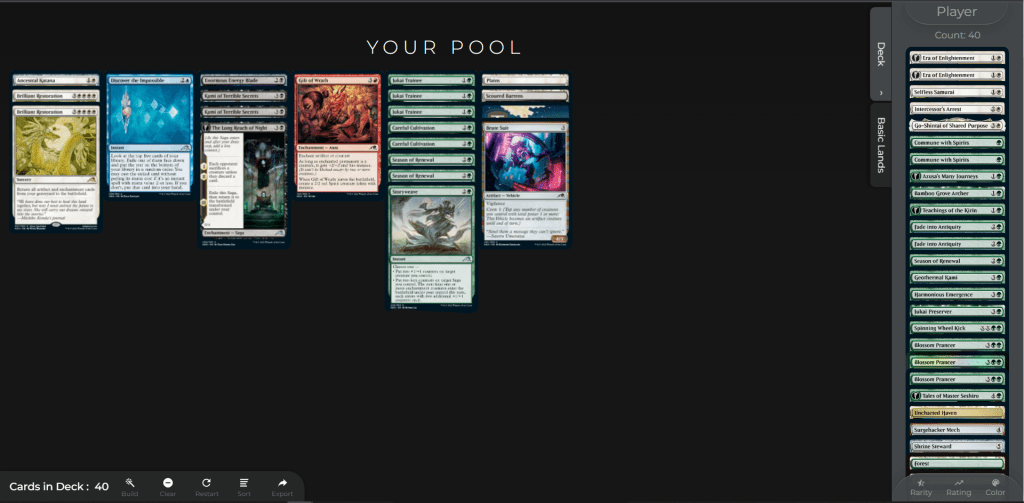
Draftsim also offers a deckbuilder for Sealed that can serve as a starting point for building your deck based on ratings.

These ratings change every week and are just there for reference, but it's a constructive way to get some direction. Especially when the set is new or if you happen to not see a card from your pool.
Arena Tutor
On the other hand, Arena Tutor does everything for you once you have it installed and logs are enabled.
It shows you statistics and ratings of cards while you’re drafting and can also suggest what the optimal build based on the cards you picked would be.
And the tool can also provide you with a lot of other statistics that you may need along with achievements you can share with your friends.
Become an Expert
Lastly, if you're really serious about getting good at limited, there are premium courses available with Hall of Fame players that you can take.
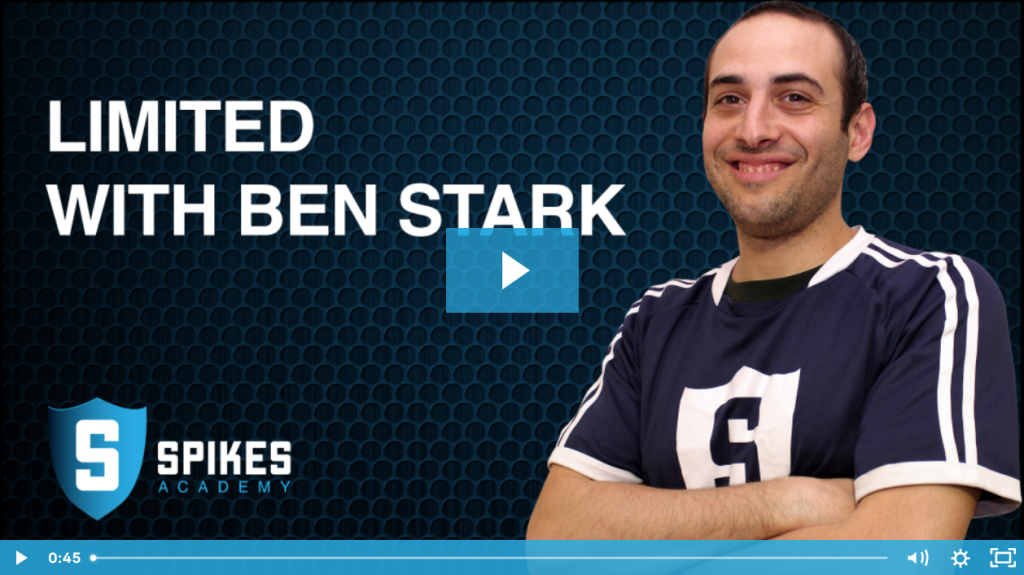
This particular course is by one of the greatest limited minds in history, Ben Stark. You can learn every principle you need to succeed at both draft and sealed. I recommend checking it out.
Wrap Up

Arena Rector | Illustration by Ryan Pancoast
Limited isn’t all about drafting cards, and MTGA provides tons of ways for you to have fun with the rotating events that fire during the year.
I still prefer drafting the vast majority of the time but once in a while, it's good to take a break from being competitive and enjoy the many other formats. I enjoy Cube the most and I love playing blue control decks with more than three colors when it’s around.
What about you? What kind of Limited formats do you like? Are there some in particular that you want to see next to your settings on MTGA? Let me know in the comments or over on Draftsim's Twitter. And don’t forget to use our draft simulator and download Arena Tutor for your MTGA Limited events.
As always, take care and I’ll see you next time. Happy drafting everyone!
Follow Draftsim for awesome articles and set updates: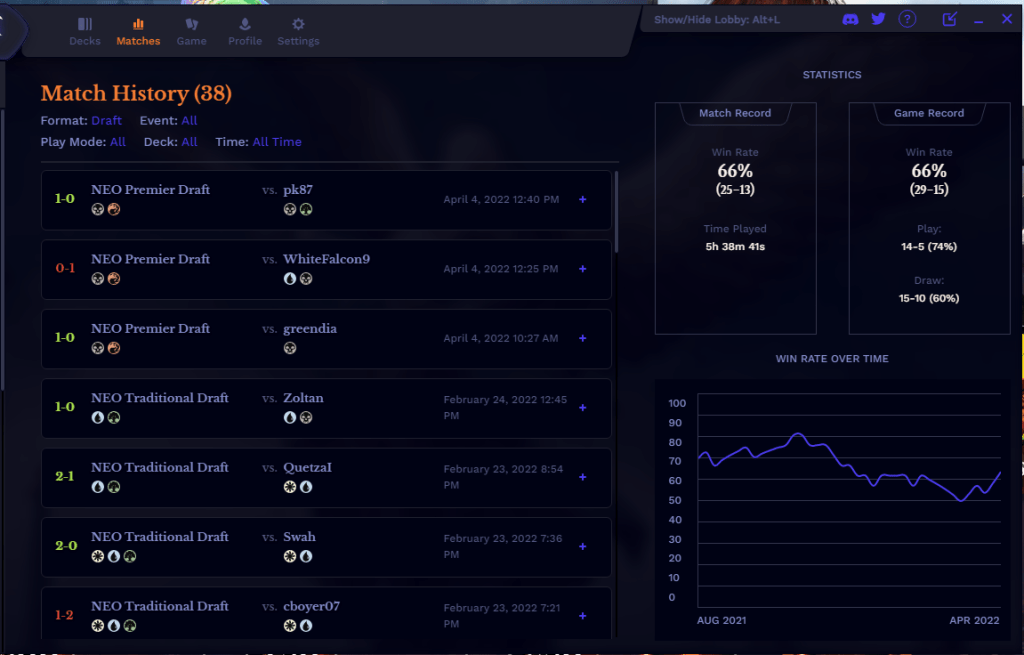
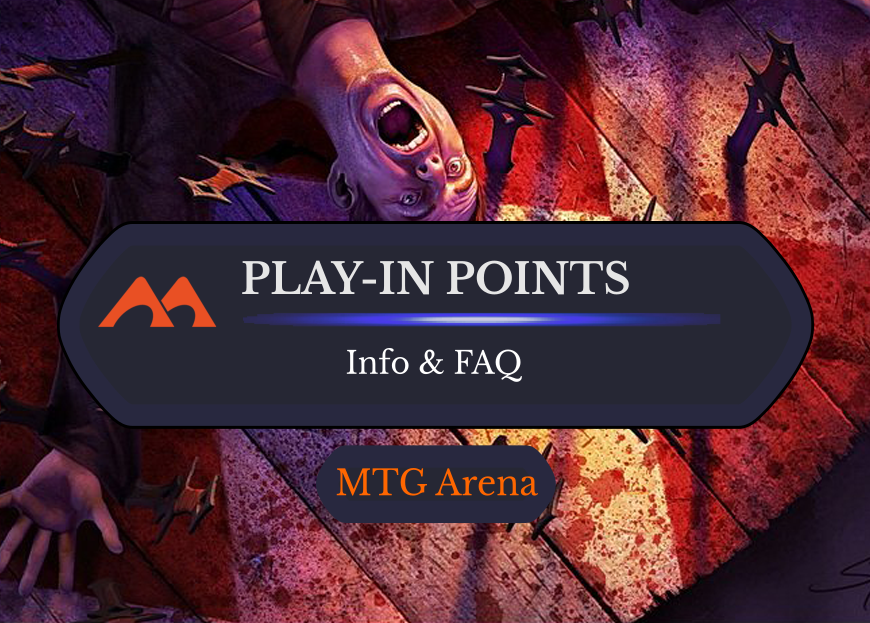
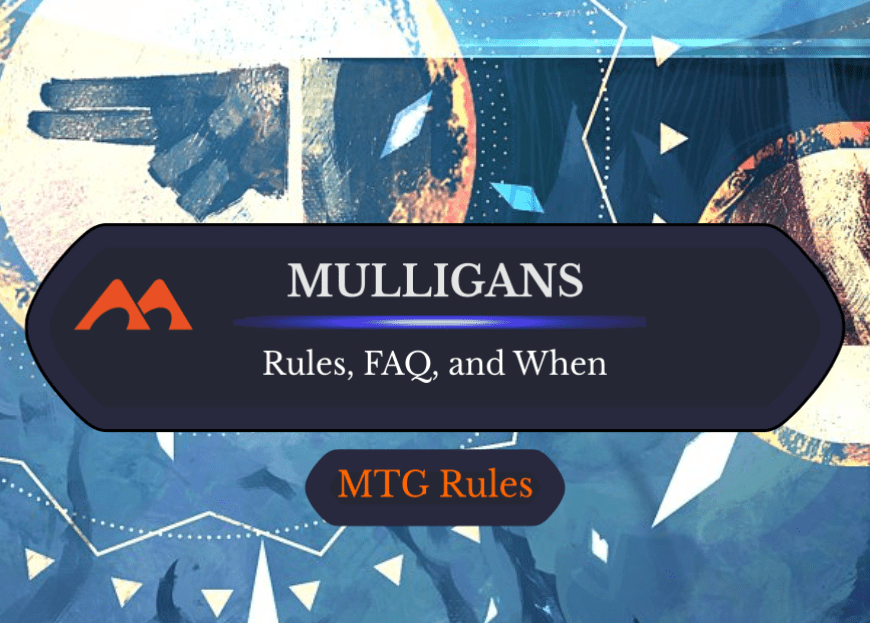
Add Comment